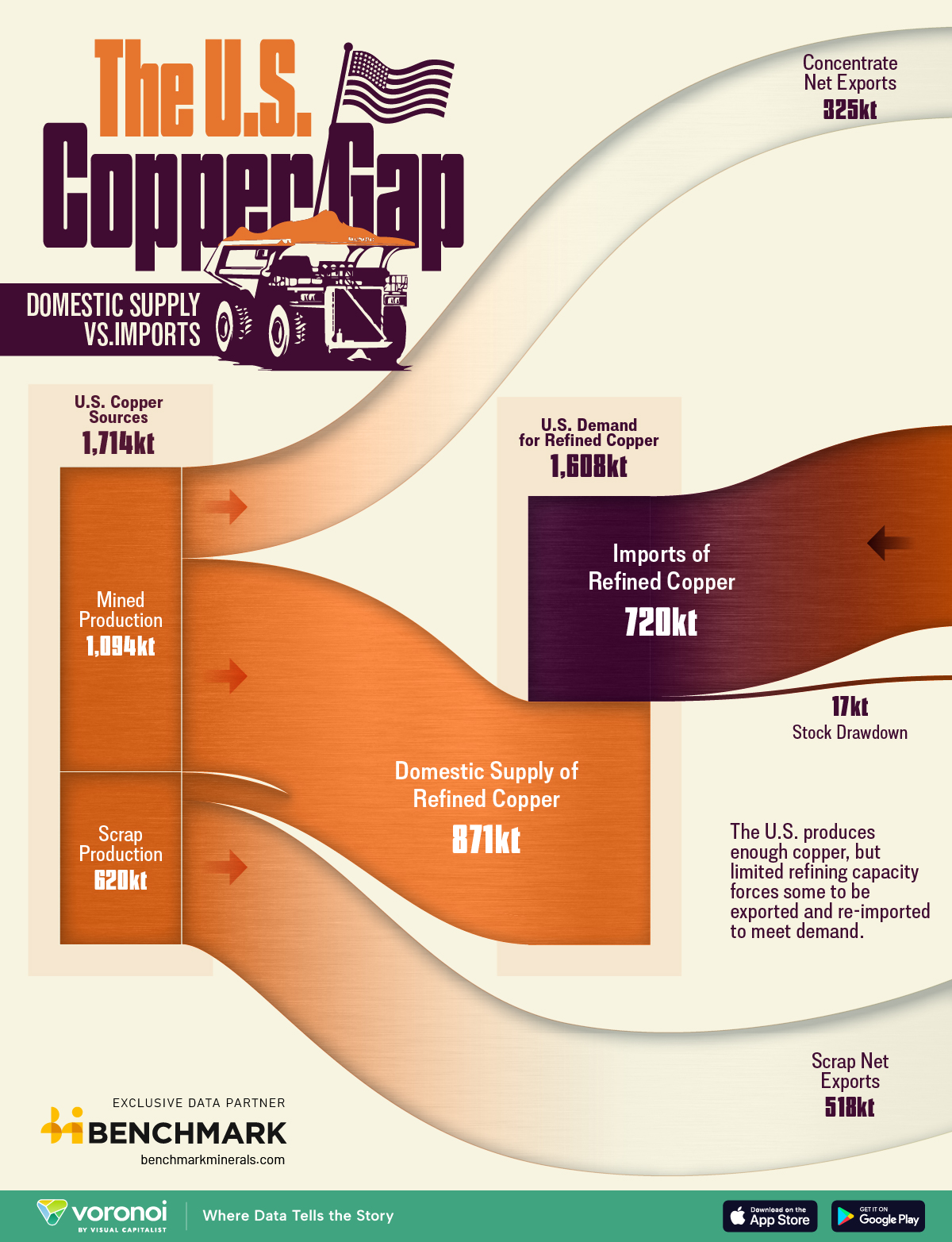![]() See this visualization first on the Voronoi app.
See this visualization first on the Voronoi app.
Visualizing the U.S. Copper Gap
This was originally posted on our Voronoi app. Download the app for free on iOS or Android and discover incredible data-driven charts from a variety of trusted sources.
Key Takeaways
- The U.S. exports more raw copper than it imports as refined copper.
- A lack of smelting and refining infrastructure is the main bottleneck, not mining output.
The U.S. is facing a paradox in its copper supply chain. Despite producing over 1.7 million tonnes of copper annually from mining and scrap, it remains heavily reliant on refined copper imports. This visualization highlights the gap between domestic copper production and the country’s limited processing capacity.
It turns out the issue isn’t a shortage of copper, it’s the lack of infrastructure to turn raw material into usable metal.
The U.S. sends nearly half its copper abroad as concentrate and scrap, only to import refined copper for industrial use. The data reveals a potential for reshoring copper processing and reducing dependency on imports.
The data for this visualization comes from Benchmark Mineral Intelligence. It shows how copper flows through the U.S. economy, from domestic production to international trade and final consumption.
The U.S. Has the Copper, But Exports It Raw
In 2024, the U.S. produced 1,714 kilotonnes (kt) of copper, including 620 kt from scrap and 1,09 4kt of mined production. However, the country exported 325 kt of concentrate and 518 kt of scrap.
| Category | Kilotonnes (2024) |
|---|---|
| U.S. Mined Production | 1,094kt |
| U.S. Scrap Production | 620kt |
| Total U.S. Production | 1,714kt |
| Concentrate Net Exports | -325kt |
| Scrap Net Exports | -518kt |
| U.S. Refined Copper Net Imports | 720kt |
| Refined Copper Stock Drawdown | 17kt |
| U.S. Refined Copper Demand | 1,608kt |
Processing Bottlenecks Create Import Dependence
With just three major smelters in operation, the U.S. lacks the infrastructure to process its own copper output. It imported 720 kt of refined copper in 2024 to meet industrial needs. This structural weakness leaves the U.S. exposed to global supply shocks and price volatility.
To bring copper processing back to the U.S., President Donald Trump recently announced a 50% tariff on imported copper.
“The idea is to bring copper home, bring copper production home,” Commerce Secretary Howard Lutnick told CNBC.
Learn More on the Voronoi App 
If you enjoyed today’s post, check out How Many New Mines Are Needed for the Energy Transition? on Voronoi, the new app from Visual Capitalist.

